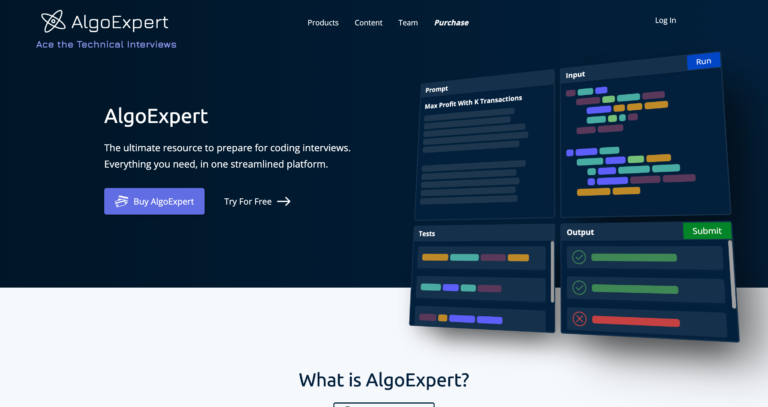Is Backend Harder Than Frontend? A Clear Answer Based on Facts

If you are considering a career in web development, you may be wondering whether backend or frontend development is more challenging. While both roles require different skill sets, it is difficult to definitively say which is harder.
Frontend developers focus on the client side of a website, creating the visual elements that users interact with. This requires a mix of technical and creative skills, as well as an understanding of user experience (UX) design.
Backend developers, on the other hand, work on the server side of a website, ensuring that it functions properly and efficiently. This requires a deep understanding of programming languages, databases, and server architecture.
Some argue that backend development is more difficult due to its technical complexity. Backend developers need to be proficient in multiple programming languages, such as Python, Ruby, and Java, as well as understand how to manage databases and server infrastructure.
Additionally, backend development requires strong attention to detail, as even a small error can cause major issues with website functionality.
However, others argue that front-end development is more challenging, as it requires a balance of technical and creative skills.
Frontend developers need to be proficient in HTML, CSS, and JavaScript, as well as understand UX design principles and how to create visually appealing websites.
Ultimately, the difficulty of frontend vs. backend development depends on your own strengths and interests. If you enjoy problem-solving and have a strong technical background, backend development may be a better fit for you.
If you have a creative eye and enjoy creating visually appealing websites, front-end development may be more up your alley.
Regardless of which path you choose, both frontend and backend development offer rewarding career opportunities in a growing industry.

Understanding Frontend and Backend
When it comes to web development, the front end and backend are two distinct components that work together to create a seamless user experience.
The frontend is the part of a website that users interact with directly, including the design, layout, and functionality. The backend, on the other hand, is responsible for the behind-the-scenes work that makes the frontend possible.
Frontend Development
Frontend development involves creating the visual and interactive elements of a website that users see and interact with. This includes designing the layout, creating the user interface, and implementing the functionality of a website.
Frontend developers use a variety of programming languages, such as HTML, CSS, and JavaScript, to bring a website to life.
One of the biggest challenges of front-end development is ensuring that a website is both visually appealing and functional. This requires a combination of technical skills, creativity, and an understanding of user experience.
Frontend developers must be able to create designs that are both aesthetically pleasing and easy to use, while also ensuring that the website functions properly across different devices and browsers.
Backend Development
Backend development involves creating the server-side components of a website that are responsible for processing data and ensuring that a website functions properly. This includes creating databases, writing server-side code, and integrating third-party services.
One of the biggest challenges of backend development is ensuring that a website is both secure and scalable. This requires a deep understanding of programming languages such as PHP, Ruby, and Python, as well as an understanding of server architecture and database management.
In summary, frontend and backend development are two distinct components of web development that work together to create a seamless user experience.
While frontend development focuses on creating the visual and interactive elements of a website, backend development is responsible for the behind-the-scenes work that makes the frontend possible. Both frontend and backend development require a combination of technical skills, creativity, and an understanding of user experience.
Key Differences Between Frontend and Backend
When it comes to web development, there are two main parts of an application: the frontend and the backend. The frontend is what the user sees and interacts with, while the backend is responsible for the behind-the-scenes functionality. Here are some key differences between frontend and backend development:
User Interface vs. Server-Side Logic
One of the main differences between frontend and backend development is the focus of each. Frontend developers are concerned with creating a user-friendly interface that looks good and is easy to use. They use languages like HTML, CSS, and JavaScript to design and develop the frontend of a website or application.
Backend developers, on the other hand, are more concerned with the server-side logic that makes an application work. They use languages like Java, Python, and Ruby to build the backend of a website or application. This includes things like database management, server configuration, and API development.
Skillset and Tools
Another key difference between frontend and backend development is the skillset and tools required for each. Frontend developers need to have a good understanding of HTML, CSS, and JavaScript, as well as knowledge of front-end frameworks like React or Angular. They also need to be familiar with design principles and user experience.
Backend developers, on the other hand, need to have a good understanding of programming languages like Java, Python, and Ruby, as well as knowledge of backend frameworks like Spring or Django. They also need to be familiar with database management and server-side scripting languages.
Collaboration and Communication
While both frontend and backend developers work together to create a website or application, there are some differences in how they collaborate and communicate.
Frontend developers often work closely with designers to ensure that the user interface is visually appealing and easy to use. They also need to communicate with backend developers to ensure that the frontend and backend are integrated properly.
Backend developers, on the other hand, need to collaborate with frontend developers to ensure that the server-side logic is working properly with the frontend.
They also need to communicate with database administrators to ensure that the database is set up correctly and functioning properly.
While both frontend and backend development are important parts of web development, they require different skillsets and tools.
Frontend developers focus on creating a user-friendly interface, while backend developers focus on the server-side logic that makes an application work.
Collaboration and communication are also important factors in ensuring that a website or application is functioning properly.
Backend Complexity
When it comes to web development, the backend is often considered more complex than the frontend.
This is because the backend involves a lot of moving parts that work together to make a website or application function properly. Understanding these moving parts is crucial to becoming a proficient backend developer.
Understanding Backend Languages
One of the first things you need to understand as a backend developer is the programming languages used to create server-side applications.
Commonly used backend languages include Java, Python, Ruby, and PHP. Each language has its own syntax and unique features, so it’s important to choose the right language for your project and become proficient in it.
Backend Frameworks
Backend frameworks are software libraries that provide a pre-built structure for building web applications.
These frameworks can save developers a lot of time and effort by providing pre-built modules and functionality. Some popular backend frameworks include Ruby on Rails, Django, and Laravel.
Backend Data Management
Managing data is a critical part of backend development. Backend developers need to know how to work with databases, design schemas, and create efficient queries. Some popular databases used in backend development include MySQL, PostgreSQL, and MongoDB.
Backend development can be more complex than frontend development due to the number of moving parts involved. However, with the right tools and knowledge, it can be a rewarding and fulfilling career path.
Frontend Complexity
As a frontend developer, you are responsible for creating the user-facing part of a website or application. This includes everything that a user sees and interacts with, from the layout and design to the buttons and forms. Frontend development has become increasingly complex over the years, and there are several factors that contribute to this complexity.
Understanding Frontend Languages
One of the complexities of frontend development is the number of languages that you need to know. HTML, CSS, and JavaScript are the three main languages used in frontend development.
HTML is used for creating the structure of a webpage, CSS is used for styling the webpage, and JavaScript is used for adding interactivity to the webpage. Each language has its own syntax, rules, and best practices that you need to learn and master.
Frontend Frameworks
Frontend frameworks, such as React, Angular, and Vue, have become increasingly popular in recent years. These frameworks provide developers with pre-built components and tools that make it easier to build complex user interfaces.
However, learning and mastering these frameworks can be challenging, and there are often many different ways to achieve the same result.
Frontend User Interface Design
Another complexity of frontend development is user interface (UI) design. Creating a visually appealing and user-friendly interface requires a combination of design skills and technical knowledge.
You need to have a good understanding of typography, color theory, layout, and usability principles. You also need to know how to implement these design principles using HTML, CSS, and JavaScript.
Frontend development has become increasingly complex over the years, and there are several factors that contribute to this complexity. Understanding frontend languages, mastering frontend frameworks, and designing user-friendly interfaces are all essential skills for a frontend developer.
Skillset Required for Frontend and Backend
Both frontend and backend development require different skillsets. Frontend development focuses on building the user interface and user experience of a website or application.
In contrast, backend development focuses on the server-side of the application, including database management, server configuration, and API development.
Frontend Development Skillset
Frontend developers must have a strong understanding of HTML, CSS, and JavaScript. They should have experience with popular frontend frameworks like React, Angular, or Vue.js.
They must also have experience with responsive design, cross-browser compatibility, and accessibility. Good communication skills are essential, as frontend developers often work closely with designers and other developers.
Backend Development Skillset
Backend developers must have a strong understanding of server-side programming languages like Python, Ruby, Java, or PHP. They should have experience with popular backend frameworks like Django, Ruby on Rails, or Laravel.
They must also have experience with database management systems like MySQL, PostgreSQL, or MongoDB. Good communication skills are also essential, as backend developers often work closely with frontend developers and project managers.
In addition to the technical skills, both frontend and backend developers must have excellent problem-solving skills, be comfortable working in a team, and be able to adapt to changing technologies and requirements.
Which is easier to learn?
When it comes to learning programming, the question of whether backend or frontend is easier to learn is a common one. The answer, however, is not straightforward and depends on various factors, including your background, interests, and goals.
Frontend
Frontend development involves creating the visible parts of a website or application, such as the user interface, layout, and design. It requires knowledge of HTML, CSS, and JavaScript, as well as familiarity with frontend frameworks and libraries like React, Angular, and Vue.
One advantage of learning frontend development is that it can be easier to get started since the tools and technologies used are often more accessible and beginner-friendly.
Additionally, frontend development allows for more creativity and visual design, which some people find more engaging and enjoyable.
On the other hand, frontend development can also be more challenging in some ways. For example, it requires a strong attention to detail and the ability to work with complex layouts and designs. It can also be more difficult to debug and troubleshoot frontend code since it often involves interactions between different elements and components.
Backend
Backend development involves creating the server-side components of a website or application, such as the database, APIs, and server logic. It requires knowledge of programming languages like Python, Ruby, or Java, as well as familiarity with backend frameworks and tools like Django, Ruby on Rails, or Node.js.
One advantage of learning backend development is that it can lead to more job opportunities and higher salaries since backend developers are in high demand. Additionally, backend development can be more straightforward and logical, making it easier to understand and debug code.
On the other hand, backend development can also be more challenging in some ways. For example, it often involves working with complex data structures and algorithms, as well as dealing with security and scalability issues. It can also require more setup and configuration, which can be daunting for beginners.
Both frontend and backend development have their own unique challenges and advantages. The best approach is to choose the one that aligns with your interests and goals and to focus on building a strong foundation in the fundamentals before diving into more advanced topics.
Job Market for Frontend and Backend
When it comes to the job market for frontend and backend developers, both roles are in high demand. However, the demand for each role can vary depending on the industry, company size, and location.
Generally, front-end developers are in high demand because of the increasing need for user-friendly websites and applications. As the online market continues to grow, businesses are looking for developers who can create visually appealing and easy-to-use interfaces.
Additionally, with the rise of mobile devices, developers who can create responsive designs are highly sought after.
On the other hand, backend developers are also in high demand because of the need for robust and scalable systems.
As businesses collect more and more data, they require developers who can create efficient and secure systems to store and process that data. Additionally, with the growth of cloud computing, developers who can create and manage cloud-based systems are highly valued.
In terms of salaries, both front-end and backend developers can earn competitive salaries.
According to a salary comparison between frontend and backend developers in the US, the average salary for a frontend developer is around $90,000 per year, while the average salary for a backend developer is around $100,000 per year.
However, salaries can vary depending on factors such as experience, location, and company size.
Overall, both frontend and backend development are important roles in the tech industry, and both offer rewarding careers.
Whether you choose to pursue frontend or backend development, there are plenty of job opportunities available.
Related Articles






